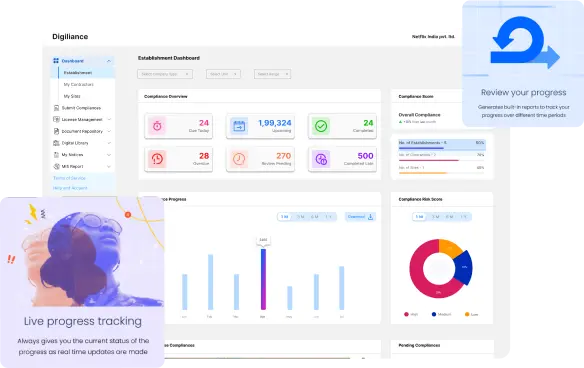Structure of the New Labour Codes
The four new labour codes replace outdated labour regulations with modern employment laws that ensure better working conditions, fair wages, and structured compliance for employers.
These four codes are:
Code on Wages, 2019
Consolidates four existing wage laws ensuring fair wage distribution across all sectors.
- Uniform wage structure
- Mandatory timely wage payments
- Equal pay for equal work
- Digital wage transactions
Industrial Relations Code, 2020
Simplifies industrial dispute resolution and enhances employer-employee relations.
- Flexible hiring and retrenchment
- Stronger dispute resolution mechanism
- Legal framework for strikes
- Simplified trade union registration
Code on Social Security, 2020
Offers comprehensive social security coverage, integrating multiple social laws.
- Expanded EPF & ESI coverage
- Universal pension scheme
- Maternity and gratuity benefits
- Mandatory employer contributions
OSHWC Code, 2020
Enhances workplace safety, health standards, and welfare measures.
- Standardized working hours
- Improved workplace safety
- Mandatory health & insurance benefits
- Migrant worker protection
Implementation and State-Wise Adoption
Implementation depends on state-level adoption and regulatory approvals, with varying compliance deadlines.
- Varying state-wise adoption timelines
- Updates to payroll and HR policies
- Digital compliance mechanisms
- Phased transition from existing labour laws
Why the New Labour Codes Matter
The new labour codes introduce significant reforms that impact both employers and employees. These laws aim to create a balanced and structured regulatory framework, ensuring job security, social protection, and business efficiency.

For Employers
- Simplified Compliance: Reduces the regulatory burden by merging multiple laws into four structured codes.
- Workforce Flexibility: Employers with up to 300 employees can hire and retrench workers without prior government approval.
- Digital Compliance & Transparency: Encourages digital payment of wages, ensuring proper record-keeping and legal clarity.
- Enhanced Dispute Resolution: Streamlines conflict resolution through Grievance Redressal Committees and structured dispute settlement mechanisms.
- Encouragement of Investment & Growth: Reduces bureaucratic complexities, promoting a business-friendly environment.

For Employees
- Wage Protection & Fair Pay: Establishes a national minimum wage, ensuring no worker is underpaid.
- Stronger Social Security Benefits: Extends EPF, ESI, gratuity, and pension schemes to gig workers, unorganized sector employees, and contract workers.
- Better Job Security & Equal Opportunity: Enforces equal pay for equal work, preventing gender-based wage discrimination.
- Improved Workplace Safety & Health Benefits: Mandates safe and hygienic working conditions, especially for hazardous industries.
- Access to Grievance Redressal: Employees can raise disputes and grievances through a structured framework, ensuring justice and fair treatment.

